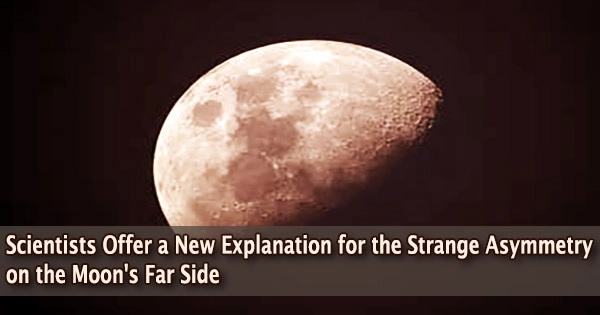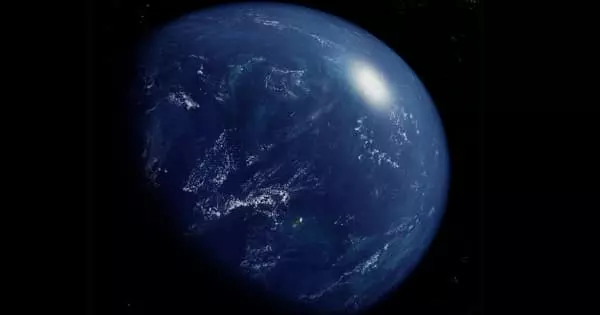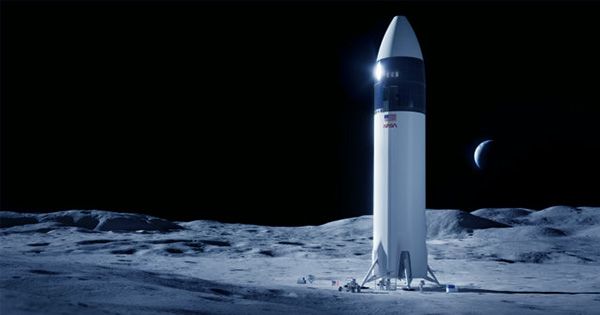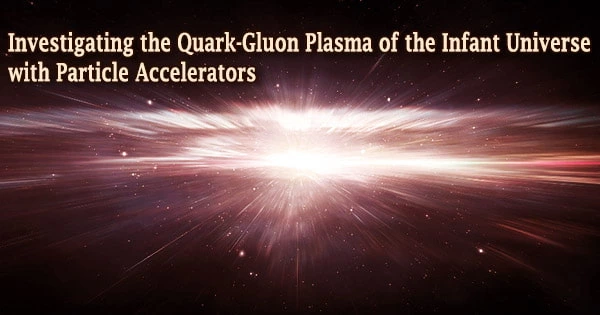The history of the Earth-Moon system is still a mystery. The two are thought to have originated when a Mars-sized body crashed with the proto-Earth, according to scientists. The larger daughter of this collision was Earth, which retained enough heat to become tectonically active.
Because the Moon is smaller, it cooled faster and geologically ‘froze.’ The Moon’s apparent early dynamism casts doubt on this theory.
According to new evidence, this is due to the fact that radioactive elements were distributed differently following the catastrophic Moon-forming impact. The Moon, like the Sun, is a prominent feature in our sky, with numerous observable properties that keep scientists busy attempting to figure out how our planet and the Solar System came to be. Satellites orbit the majority of the planets in our solar system.
Mars, for instance, has two moons, Jupiter has 79, and Neptune has 14. Some moons are icy, while others are rocky, and some are still geologically active while others are dormant. The origins of planets’ satellites and why they have the traits they do could throw insight on many elements of the early Solar System’s formation.
The Moon is a stony mass that is rather cold, with little water and little tectonic processing. The Earth-Moon system is thought to have formed when a Mars-sized body named Theia, who was the mother of Selene, the goddess of the Moon in Greek mythology, collided with the proto-Earth, forcing the components of both bodies to mingle.
The Earth and Moon are assumed to have formed very quickly, perhaps over a few million years, from the debris of this impact. The Earth grew larger and evolved into a sweet spot in terms of size, when it was just the proper size to become a dynamic planet with an atmosphere and oceans.
The Earth’s Moon became smaller and lacked the necessary mass to support these qualities. Thus, preserving volatile molecules like as water or the gases that make up our atmosphere, or retaining enough internal heat to enable long-term planetary volcanism and tectonics, are unique to how the Earth-Moon forming collision occurred.
Decades of observations have shown that lunar history was far more dynamic than previously thought, with volcanic and magnetic activity occurring as recently as 1 billion years ago, far later than previously thought.
The substantial asymmetry visible in the Moon’s surface features may provide insight into why the near and far sides are so different. On any given night or day, on the Moon’s constantly Earth-facing near side, one can see dark and light patches with the naked eye. By analogy with the Earth, early astronomers termed these black regions ‘maria,’ Latin for ‘seas,’ thinking they were bodies of water.
Because of the relative lack of erosion processes, the Moon’s surface records geological events from the Solar System’s early history. In particular, regions on the Moon’s near side have concentrations of radioactive elements like U and Th unlike anywhere else on the Moon. Understanding the origin of these local U and Th enrichment can help explain the early stages of the Moon’s formation and, as a consequence, conditions on the early Earth.
Matthieu Laneuville
Over a century ago, scientists were able to determine that these were not seas, but rather craters or volcanic structures, thanks to the use of telescopes. Most scientists at the time assumed that the far side of the Moon, which they would never be able to see, was similar to the near side.
The Moon, however, was the first Solar System body humanity were able to explore, first with uncrewed spacecraft and subsequently ‘in person’, due to its proximity to the Earth, at only 380,000 kilometers.
The first photos of the far side of the Moon were returned by non-crewed Soviet space probes in the late 1950s and early 1960s, and scientists were shocked to find that the two sides were extremely different.
There was almost no maria on the far side. Only 1% of the far side of the building was covered in maria, compared to ~31% on the adjacent side. Scientists were perplexed, but they felt that the imbalance could reveal information about how the Moon arose.
NASA’s Apollo missions placed six spacecraft on the Moon in the late 1960s and early 1970s, and astronauts returned with 382 kg of Moon rocks to try to comprehend the Moon’s origins through chemical analysis.
With samples in hand, scientists rapidly determined that the patches’ relative blackness was related to their geological composition, and that they were, in fact, caused by volcanism.
They also discovered a new form of rock signature connected with the maria called KREEP, which stands for potassium (chemical symbol K), rare-earth elements (REE, which include cerium, dysprosium, erbium, europium, and other rare-earth elements), and phosphorus (chemical symbol P).
But why the KREEP signal and volcanism were dispersed so unevenly between the near and distant sides of the Moon remained a mystery.
Scientists from the Earth-Life Science Institute at Tokyo Institute of Technology, the University of Florida, the Carnegie Institution for Science, Towson University, NASA Johnson Space Center, and the University of New Mexico have now provided some new clues as to how the Moon acquired its near and far-side asymmetry using a combination of observation, laboratory experiments, and computer modeling. These hints are tied to a key feature of KREEP.
Importantly for this scenario, potassium (K), thorium (Th), and uranium (U) are radioactively unstable elements. This means they can be found in a wide range of atomic structures with varying quantities of neutrons.
Isotopes are atoms with varying compositions, some of which are unstable and break apart to produce other elements, creating heat. The heat generated by these elements’ radioactive decay can help melt the rocks in which they are found, which could explain their co-localization in part.
This research indicates that, in addition to increased heating, adding a KREEP component to rocks decreases their melting temperature, increasing the volcanic activity predicted by simple radiogenic decay models.
This study adds restrictions to the date of the Moon’s evolution and the sequence in which distinct events happened on the Moon because most of these lava flows were deposited early in lunar history.
Collaboration between scientists working on theory and experiment was essential for this project. The researchers examined the consequences of high-temperature melting tests of rocks with varied KREEP components on the timing and volume of volcanic activity on the lunar surface, providing crucial information into the early stages of the Earth-Moon system’s evolution.
ELSI coauthor Matthieu Laneuville comments, “Because of the relative lack of erosion processes, the Moon’s surface records geological events from the Solar System’s early history. In particular, regions on the Moon’s near side have concentrations of radioactive elements like U and Th unlike anywhere else on the Moon. Understanding the origin of these local U and Th enrichment can help explain the early stages of the Moon’s formation and, as a consequence, conditions on the early Earth.”
The findings of this study imply that lunar evolution has been influenced by the Moon’s KREEP-enriched maria since its formation. Laneuville believes that evidence for non-symmetric, self-amplifying processes could be found on other moons in our Solar System, as well as rocky bodies throughout the Universe.
















